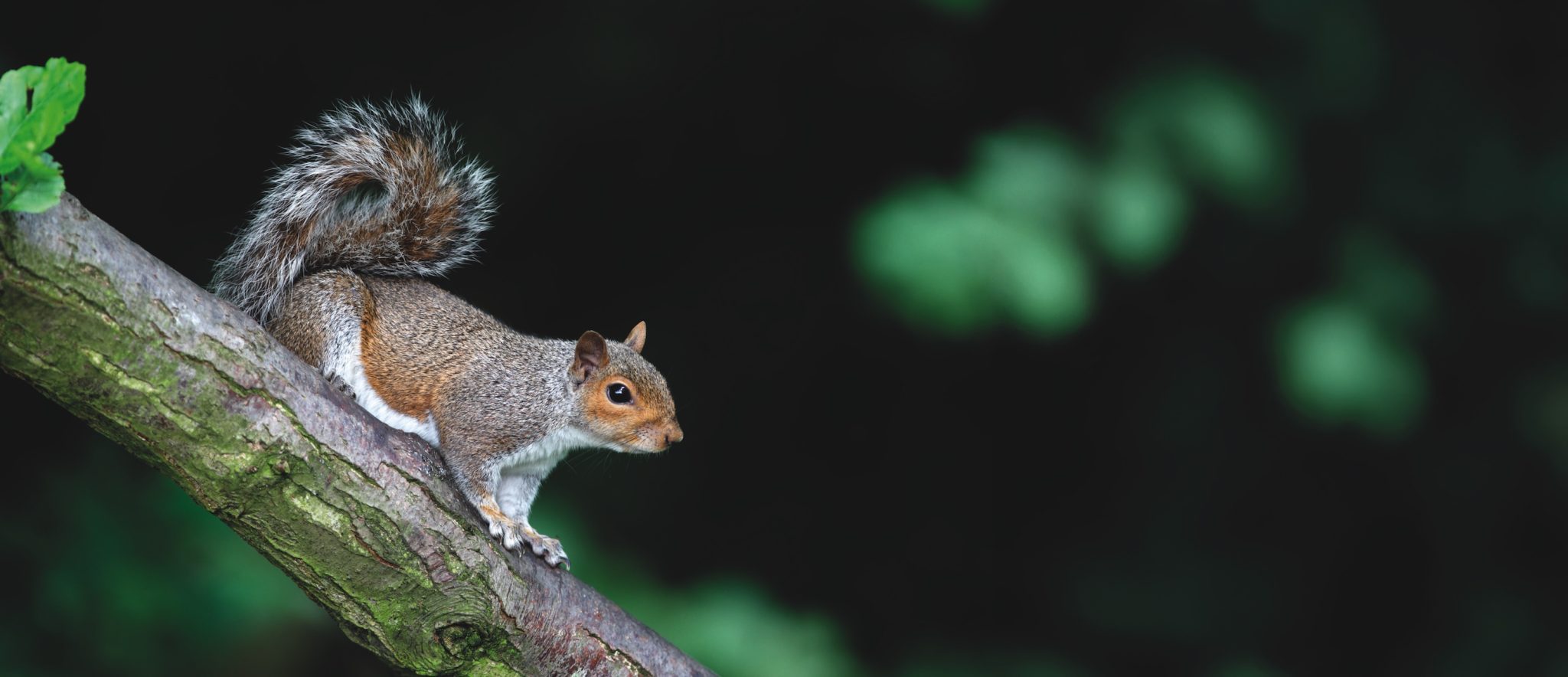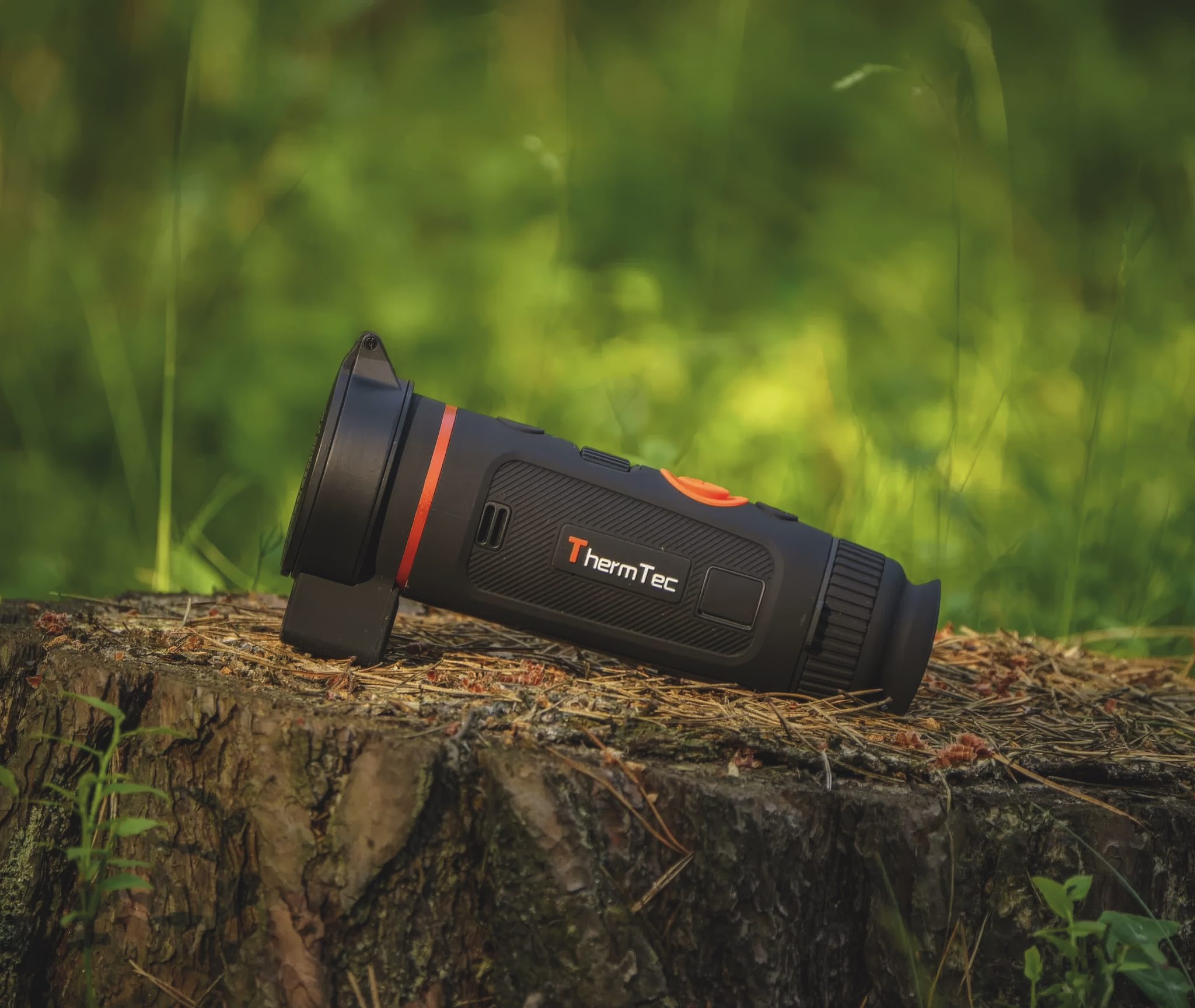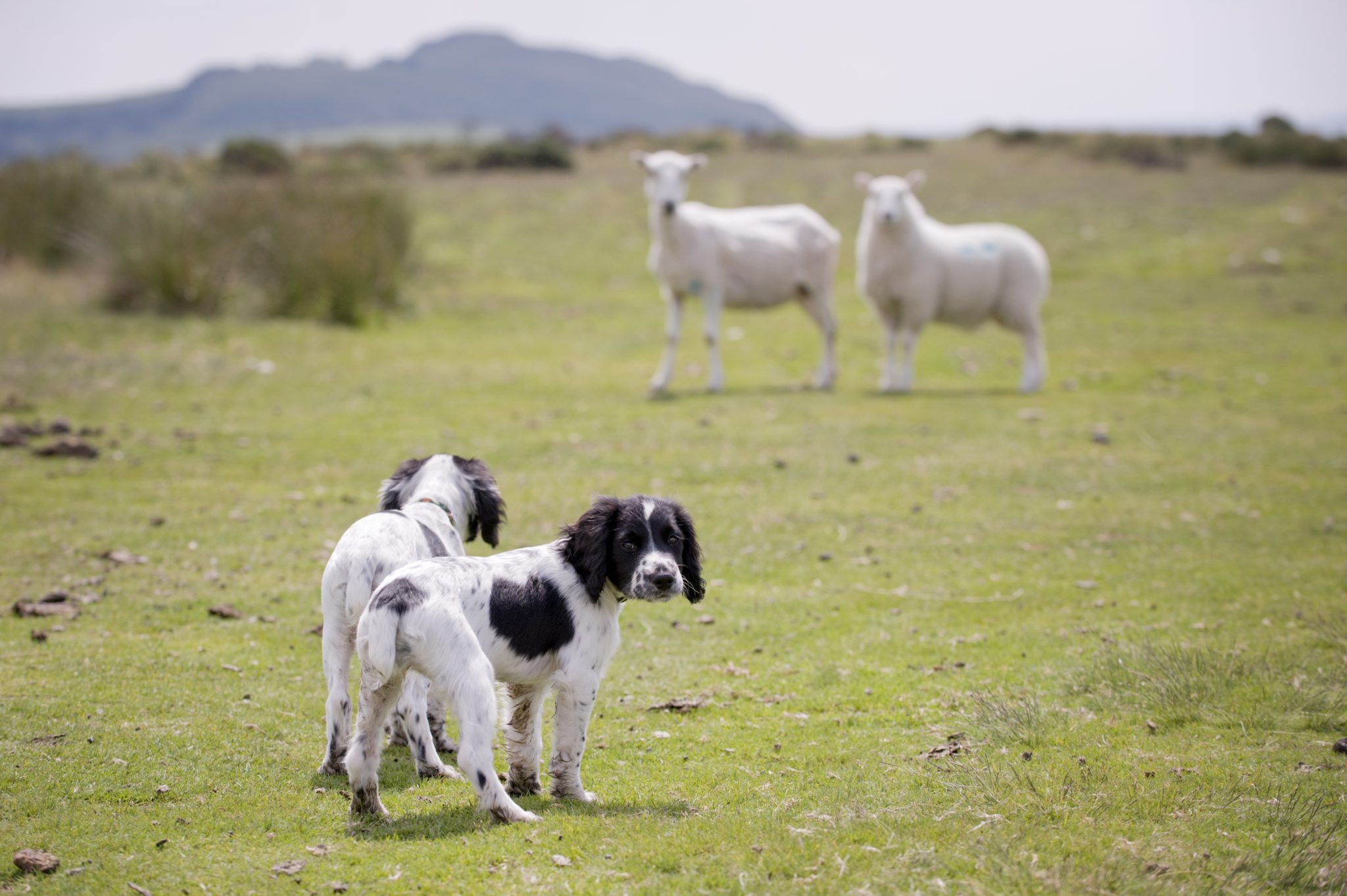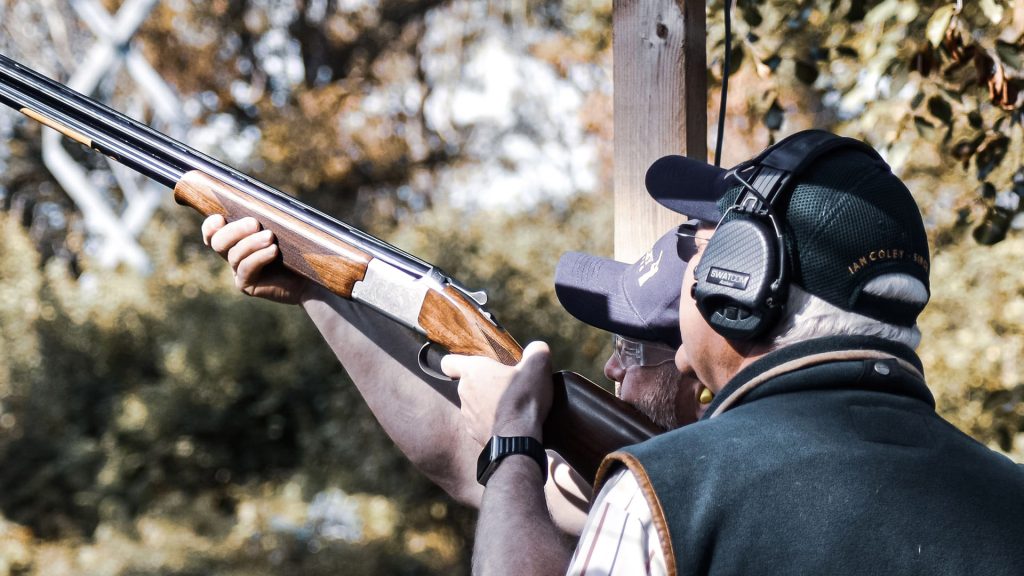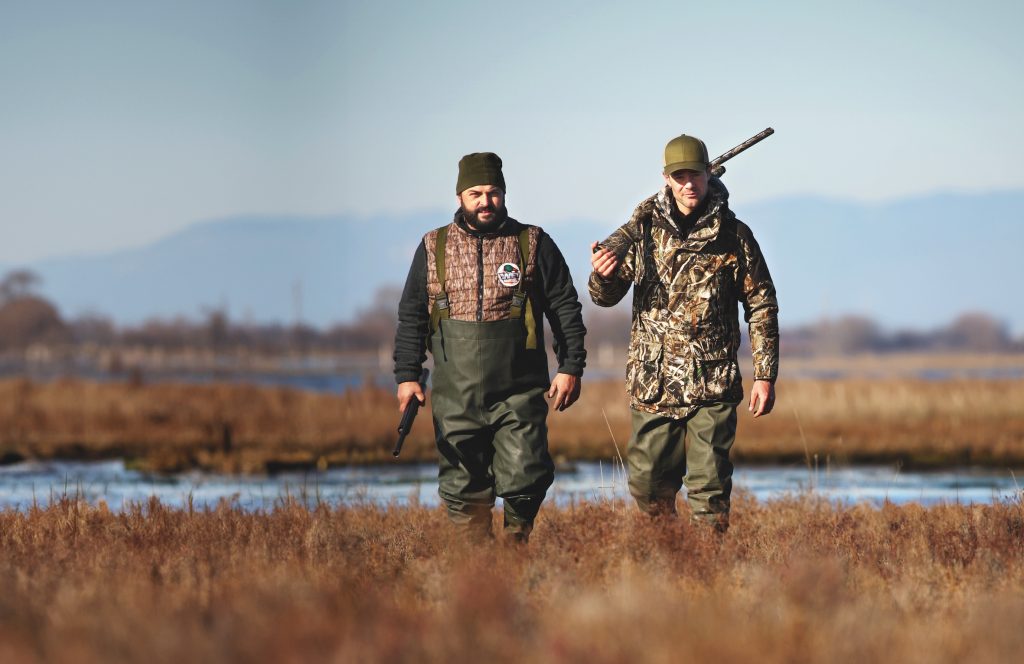Win CENS ProFlex DX5 earplugs worth £1,149 – enter here
How to become a respectable rough Shot
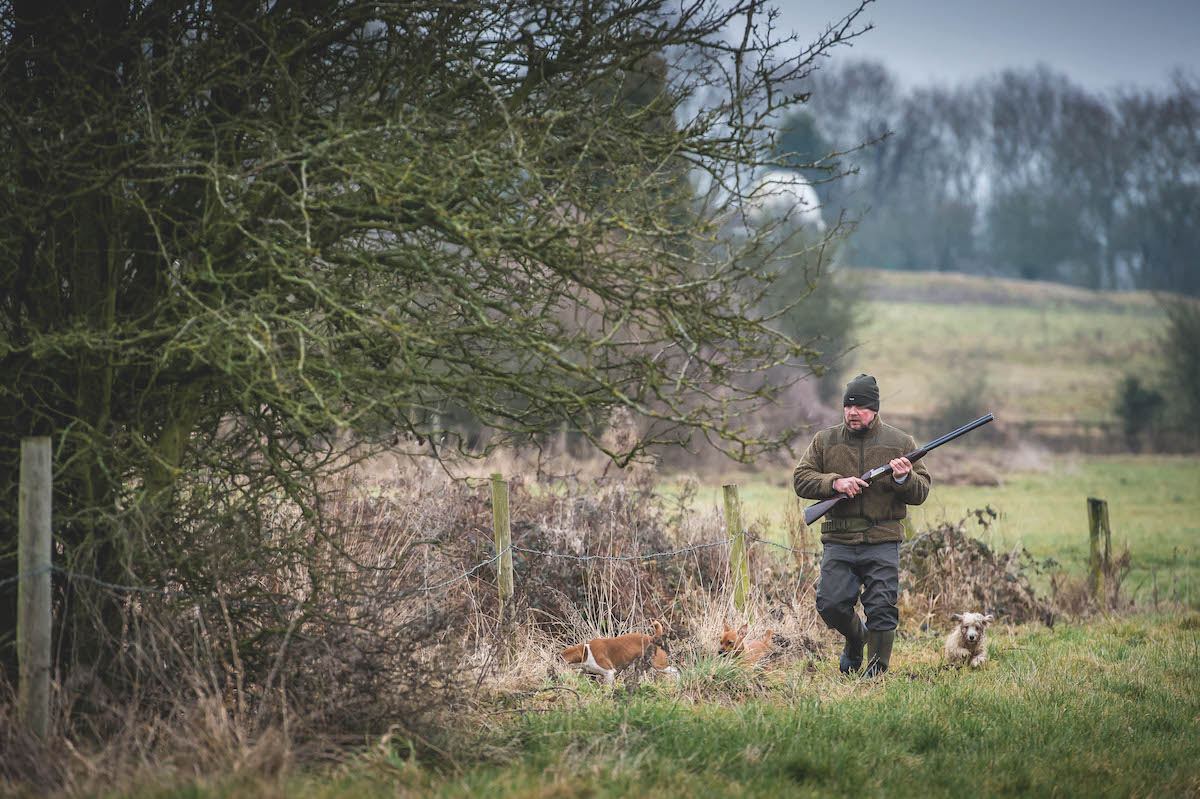 Mike encourages his Plummer outcross Ruby into cover.
Usd 8 mar 17 rough shooting
Mike encourages his Plummer outcross Ruby into cover.
Usd 8 mar 17 rough shooting
How to become a good rough Shot
- Learn about the quarry you’re after, where it’s likely to be, what it sounds like, how it’s going to behave and how you need to behave in order to get the shot away.
- Be alert to your surroundings, listening to the sounds of nature as well as to the rest of your team of Guns.
- Be ready to make a shot — remember that there’s no whistle to start the drive so there’s a chance of a shot at every moment.
- Understand the dogs you’re shooting with and how they are likely to behave out in the field. Knowing one or two of the key commands they’re being given can make the split-second difference between taking a shot and not. (Read more on gundog commands here.)
- Learn from those with more experience than you. Even when you’re an experienced Shot, there is still lots to be learned.
- Enjoy the day, it makes the pain of blackthorn scrapes or rain dripping down your neck less miserable. (Read what to wear shooting.)
I was excited when a good friend accepted an invitation to come for a low-key rough shooting day last season. We’d be out with some spaniels, exploring some hedgerows, then mooching across some boggy land and there’d be some woodland in the mix too. We’d have half a dozen shots and hopefully take home a handful of assorted game.
Not a good rough Shot
There was a problem though; when it came to it, he couldn’t hit a thing. It wasn’t so much that he missed the birds but missed the game entirely. There was a lack of anticipation, he couldn’t read the dogs and seemingly wasn’t able to get into the right places at the right time. There was only so much shouting and direction I was able to give him without spoiling things. Game would get up and away before the gun was ever in his shoulder. I was puzzled. At the other end of the spectrum is another friend, who again I won’t name but for fear of ego-boosting, whose reactions are that of a Formula One racing driver. He can spend an entire day rough shooting with gun half-cocked, ready to tuck quickly into his shoulder to make a shot, always alert to what the dogs are doing and where he should be.
Fieldcraft on a rough shooting day
Comparing the two of them to one another, it made me think: what is it that actually makes a good rough Shot, and how does a Gun develop the fieldcraft and skills needed to cut it when it counts? I think perhaps rough shooting is a diminishing art, but it’s probably the type of shooting that will exist long after driven shooting does, with small, sustainable bags. It could also be hugely expensive.
It’s perhaps an unpopular view, but the increase in accessibility of driven shooting has enabled more people to step away from rough shooting into easy, low energy, peg-based shooting. I see more and more youngsters out on the shooting field, which I am wholly supportive of. But when they have jumped straight into driven shooting without learning the basics of the quarry they’re shooting, it doesn’t contribute to their fieldcraft and ability to shoot game when it really counts — when a single shot might be all you get in a whole outing.
A good rough Shot needs to have an interest in nature and the great outdoors. I often see rough shooters far more excited about the prospect of a single shot at a lone snipe than at the idea of shooting off a slab standing on a peg.
I don’t think it is any coincidence either that these are the Guns who will be talking about nature when they’re not in the field. The ones who will take their binoculars on a stroll in the countryside or find fancy in nature through means other than just shooting. In learning about the great outdoors and the game you are hunting, it enables you to begin to understand the likely places game will be hiding, how it’s likely to react and where you need to be to shoot it.
For example, I’ll always make sure I give holly bushes an extra rustle on my way past in the knowledge they’re more likely to be hiding a woodcock than other shrubs. Or go silent and bring the dogs in when I’m approaching a scrape or pond. Small changes in our behaviour based on knowledge of our quarry’s behaviour can pay dividends.
Any game in the bag is highly valued by the rough shooter, who might only have the opportunity for one or two shots through the day
Gundog behaviour
It’s fair to say that rough shooting is almost impossible without decent dogs. They can cover infinitely more ground than a line of Guns can and clearly have an ability to find quarry that we can only dream of. Understanding the behaviour of the dogs you’re shooting with, whether they’re yours or someone else’s, can be a hugely helpful part in making a successful day.
If you’ve worked with dogs of your own for a while, you begin to read them. But if you’ve not got your own dogs out, it’s worth asking the owners about their behaviours, how they like to work and whether there are any telltale signs of when they might be on to quarry. Equally importantly, it’s worth asking what the key commands are; not so that you can work them yourself, but so you can listen out for when a ‘find’ or ‘search’ command is given. Those commands are often followed by a flush of some sort.
Being alert is critical to becoming a good rough Shot. Concentrating on what’s going on for the whole day, listening to the shouts of other Guns and taking instruction when it’s directed at you are key. I realised around lunchtime on the day my good driven shooting friend came for a walkabout that he hadn’t turned on his electronic ear defenders and was completely oblivious to the instructions I was giving him.
Enjoying being out in the field often makes the difference between someone who wants to learn and someone who doesn’t. Learning the fieldwork and skills required from those who have the knowledge and willingness to teach is the perfect way to improve as a rough Shot. While I don’t profess to be anywhere near an expert in the field, I have spent time from a very young age learning from those who have gone before me and practising the skills required.
All of it then helps a Gun to be able to react in that split second when a woodcock bursts from the holly or a snipe jinks out of the rushes. The good rough Shot has anticipated where they need to be, read the movements of the dog, got themselves ready to shoot and then reacted quickly.
I think perhaps over the past couple of decades rough shooting has started to become a dying skill, but it certainly isn’t dead yet. With driven shooting facing lots of challenges, I think rough shooting might be in for a renaissance.
Related Articles
Get the latest news delivered direct to your door
Subscribe to Shooting Times & Country
Discover the ultimate companion for field sports enthusiasts with Shooting Times & Country Magazine, the UK’s leading weekly publication that has been at the forefront of shooting culture since 1882. Subscribers gain access to expert tips, comprehensive gear reviews, seasonal advice and a vibrant community of like-minded shooters.
Save on shop price when you subscribe with weekly issues featuring in-depth articles on gundog training, exclusive member offers and access to the digital back issue library. A Shooting Times & Country subscription is more than a magazine, don’t just read about the countryside; immerse yourself in its most authoritative and engaging publication.



